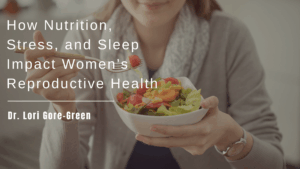Uterine fibroids are one of the most common reproductive health conditions affecting women, yet many go undiagnosed for years. Because symptoms often overlap with other gynecological concerns—or are dismissed as “normal period problems”—women may not recognize the early warning signs. Understanding what fibroids are, why they develop, and how to spot the symptoms early is essential for protecting long-term reproductive and overall health.
This guide breaks down the basics of fibroids and highlights the signs women should never ignore.
What Are Uterine Fibroids?
Uterine fibroids (also called leiomyomas or myomas) are noncancerous growths that develop in or on the uterus. They vary in size from tiny, pea-like nodules to larger masses that can enlarge the uterus itself. Many women have fibroids without ever knowing—some remain small and symptom-free, while others grow and cause significant discomfort or complications.
Fibroids are most common during a woman’s reproductive years and often shrink after menopause, suggesting a strong hormonal connection, especially with estrogen and progesterone.
Who Is Most at Risk?
Although any woman can develop fibroids, certain factors increase the risk:
-
Age: Most common between ages 30 and 50
-
Family history: Women with a mother or sister with fibroids are at higher risk
-
Race: More prevalent and more aggressive in Black women
-
Hormonal imbalance: High estrogen or progesterone levels
-
Lifestyle factors: Obesity, vitamin D deficiency, and high alcohol intake
Knowing your risk can help you monitor symptoms more effectively.
Early Signs of Fibroids Women Should Never Ignore
Fibroids affect each woman differently, but there are key symptoms that often appear early—and should never be brushed aside.
1. Heavy or Prolonged Menstrual Bleeding
One of the most common signs of fibroids is unusually heavy bleeding, often described as:
-
Soaking through pads or tampons within an hour
-
Passing large blood clots
-
Needing to double up on menstrual products
-
Periods lasting longer than 7 days
Heavy bleeding can lead to iron-deficiency anemia, causing fatigue, weakness, dizziness, and shortness of breath.
2. Pelvic Pain or Pressure
As fibroids grow, they can create a sensation of:
-
Constant pelvic pressure
-
Fullness or heaviness in the lower abdomen
-
Pain during daily activities
-
Painful menstrual cramps that worsen over time
This discomfort is often mistaken for normal menstrual cramps, but persistent or increasing pelvic pain should always be discussed with a healthcare provider.
3. Frequent Urination
Fibroids—especially those located near the bladder—can cause:
-
Needing to urinate more often
-
Feeling like you can’t fully empty your bladder
-
Waking up several times at night to urinate
This symptom is easily misinterpreted as a bladder issue but often stems from fibroids pressing on the urinary tract.
4. Pain During Sex
Fibroids that develop near the cervix or lower uterus can cause:
-
Deep vaginal pain during intercourse
-
Pelvic discomfort afterward
While painful sex can have multiple causes, fibroids are a frequent contributor, especially if the pain is new or worsening.
5. Back or Leg Pain
Large fibroids can press on nerves, leading to:
-
Lower back pain
-
Pain radiating down the legs
-
A feeling of heaviness in the hips
If musculoskeletal treatments don’t help, fibroids may be the underlying issue.
When to See a Healthcare Professional
You should seek medical evaluation if you experience:
-
Heavy, irregular, or prolonged menstrual bleeding
-
Pelvic pain lasting more than a few days
-
Sudden worsening of any of the above symptoms
-
Difficulty getting pregnant
-
Rapid weight gain in the lower abdomen
A gynecologist may recommend an ultrasound or other imaging tests to confirm the presence, size, and location of fibroids.
Complications of Untreated Fibroids
Without early detection or management, fibroids can lead to:
-
Severe anemia
-
Chronic pelvic pain
-
Fertility challenges
-
Pregnancy complications (preterm birth, miscarriage)
-
Enlarged uterus
Although fibroids are not cancerous, their impact on everyday life can be substantial.
Treatment Options
Treatment depends on symptom severity, fibroid size, age, and reproductive goals. Options include:
-
Medication: To manage pain or reduce bleeding
-
Hormonal therapy: To shrink or control fibroid growth
-
Non-invasive procedures: Such as MRI-guided focused ultrasound
-
Minimally invasive surgery: Uterine fibroid embolization (UFE), laparoscopic myomectomy
-
Traditional surgery: Abdominal myomectomy or hysterectomy in severe cases
Women today have more treatment options than ever, many of which preserve fertility.
Final Thoughts: Pay Attention to What Your Body Is Saying
Fibroids are common, but suffering through symptoms is not. Early detection can prevent complications and lead to more effective and less invasive treatment options. If something doesn’t feel right—if your periods suddenly change, if pelvic pressure becomes persistent, or if fatigue from heavy bleeding impacts your daily life—trust your instincts.
Your body communicates in early, subtle ways. Listening to these signals is the first step toward protecting your reproductive health and overall well-being.


